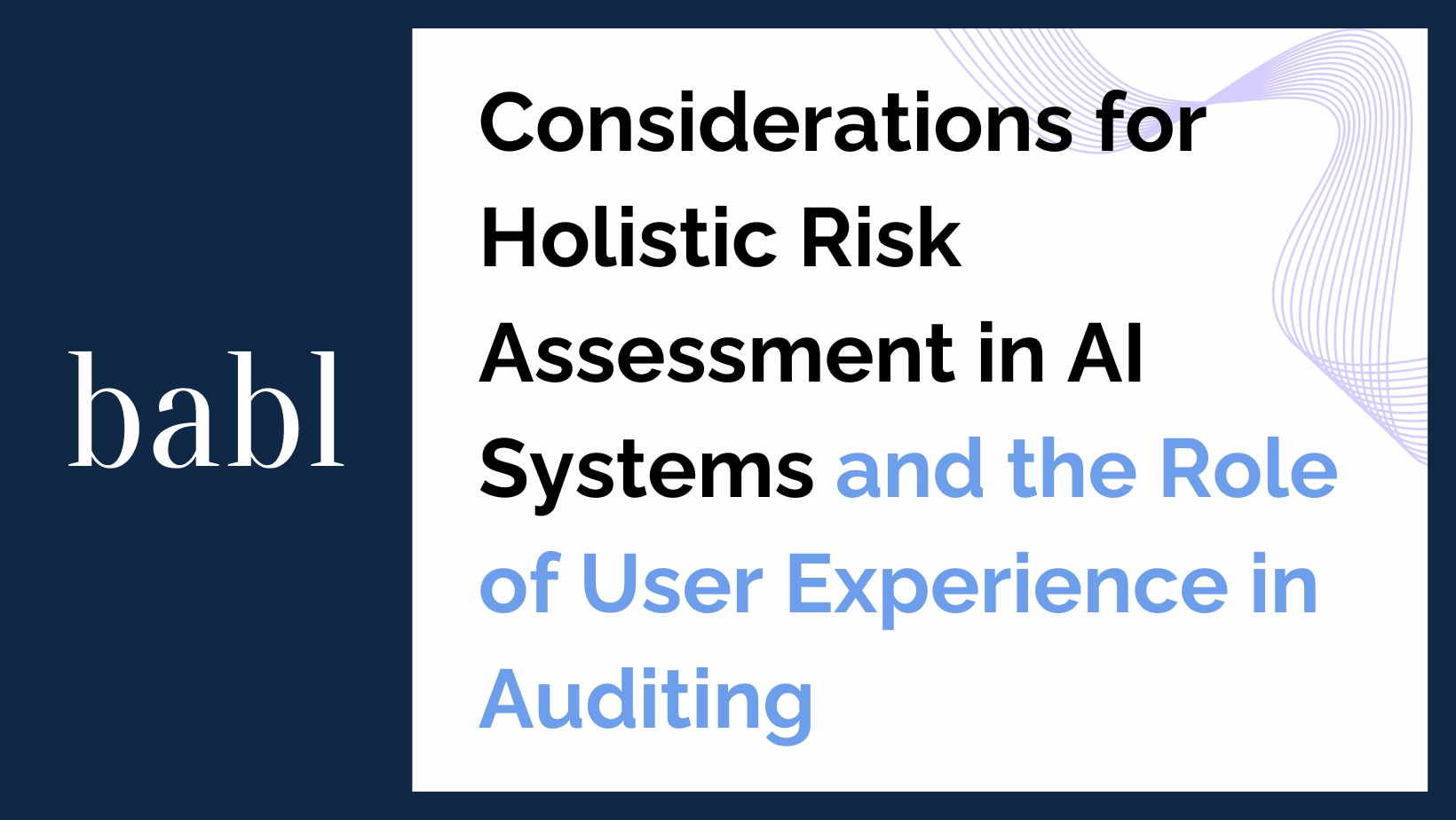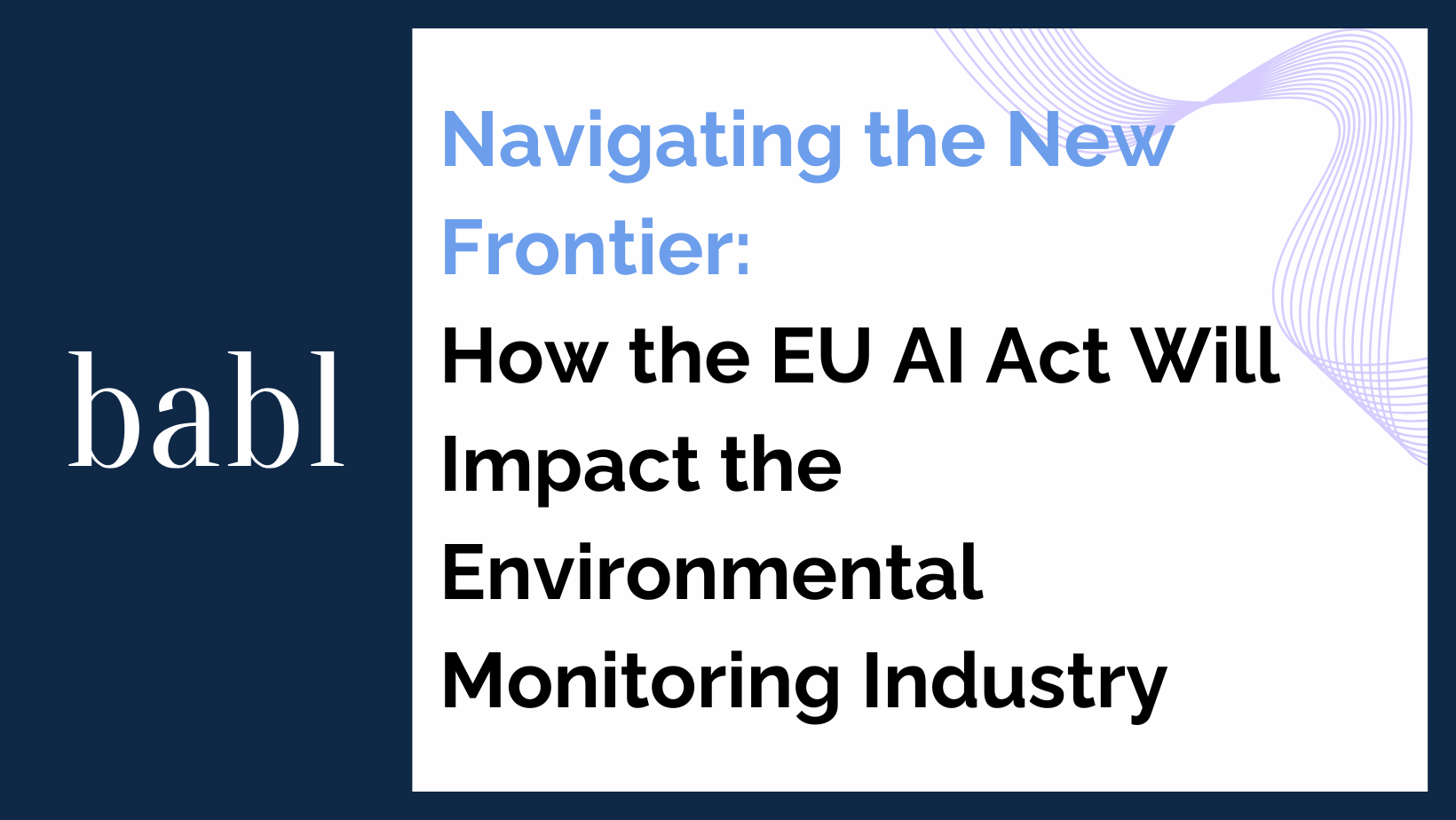Considerations for Holistic Risk Assessment in AI Systems and the Role of User Experience in Auditing
As AI technologies become increasingly integrated into various aspects of society, the need for comprehensive risk assessment methodologies and user-centric auditing practices is paramount to ensure the ethical and responsible deployment of AI systems. One of the keys is the importance of conducting holistic risk assessments in AI systems.
Traditional risk assessment approaches often focus on technical vulnerabilities and cybersecurity threats. However, in the context of AI, a holistic risk assessment must consider a broader range of factors, including socio-technical aspects, ethical implications, and user experience considerations. By adopting a holistic approach to risk assessment, organizations can identify and mitigate risks that may arise from the interaction between AI systems, human users, and the broader socio-cultural context in which the technology operates.
These are needed to identify critical risk factors and leverage risk assessment methodologies to evaluate the potential impacts of AI systems on individuals, communities, and society at large. This includes assessing the transparency, accountability, and fairness of AI algorithms, as well as considering the ethical implications of AI decision-making processes. By conducting thorough risk assessments that encompass technical, ethical, and societal dimensions, organizations can proactively address risks, prevent harm, and promote ethical AI practices.
Furthermore, user experience encompasses how individuals interact with and perceive AI technologies, including the usability, accessibility, and trustworthiness of AI systems. In the context of auditing AI systems, user experience considerations play a crucial role in evaluating how users engage with AI interfaces, understand AI-generated outputs, and make decisions based on AI recommendations. Auditors must assess the clarity, transparency, and interpretability of AI systems to ensure that users can effectively navigate and trust the technology.
Psychological Considerations
There is also a layer of importance when it comes to integrating behavioral psychology and human-centered design principles into the auditing process to enhance user experience and mitigate risks associated with AI systems. By understanding user behaviors, preferences, and cognitive biases, auditors can design AI interfaces that promote informed decision-making, mitigate user errors, and foster trust in AI technologies. User experience auditing involves evaluating the usability, accessibility, and ethical implications of AI systems from the perspective of end-users to ensure that AI technologies align with user needs and expectations.
Conclusion
In conclusion, considerations for holistic risk assessment in AI systems and the role of user experience in auditing are essential components of ethical AI practices. By adopting a comprehensive approach to risk assessment that encompasses technical, ethical, and user-centric considerations, organizations can identify and mitigate risks associated with AI technologies. Integrating user experience principles into the auditing process enables organizations to design AI systems that prioritize transparency, usability, and user trust, ultimately fostering ethical AI practices and enhancing the overall user experience.
Need Help?
If you’re seeking clarity on risk assessments, BABL AI‘s team of audit experts is ready to provide assistance. They are ready to answer your questions and concerns while providing valuable insights.





